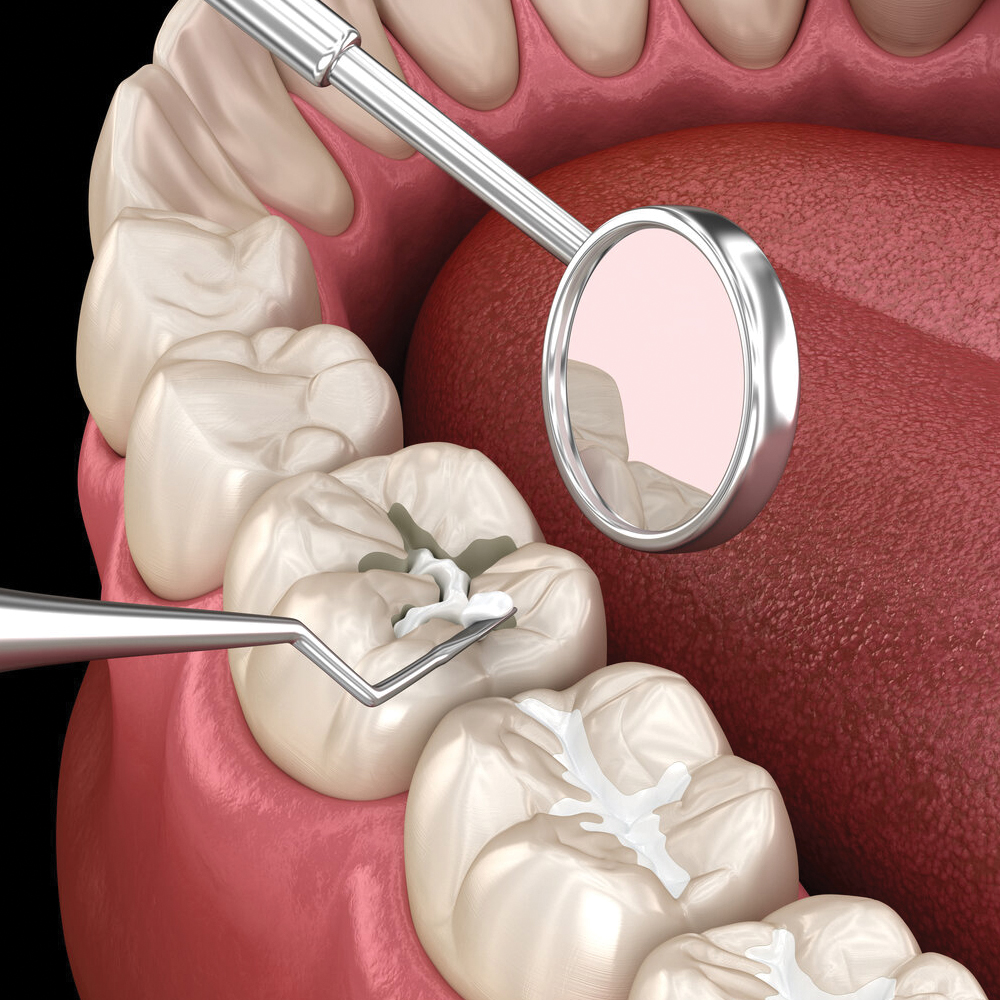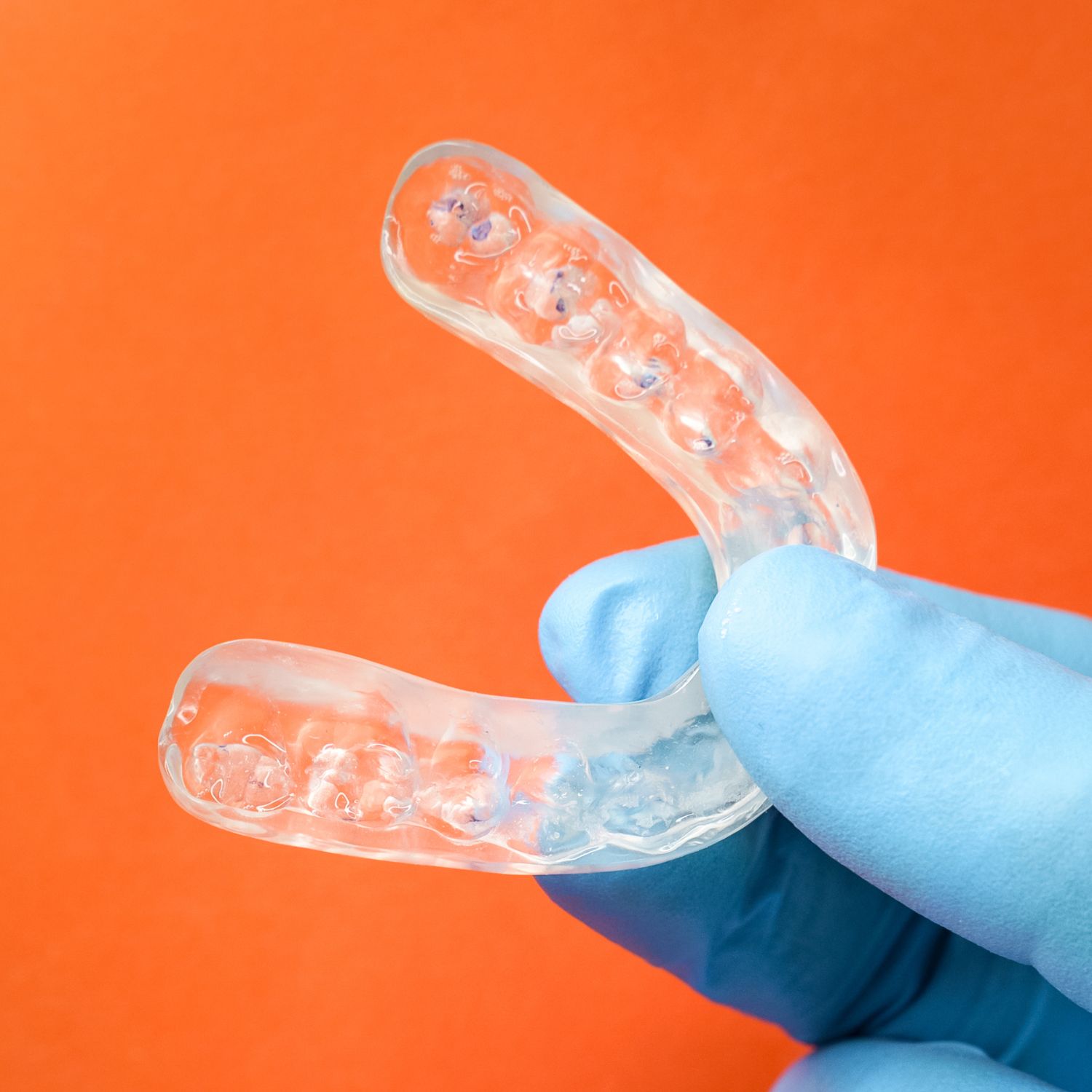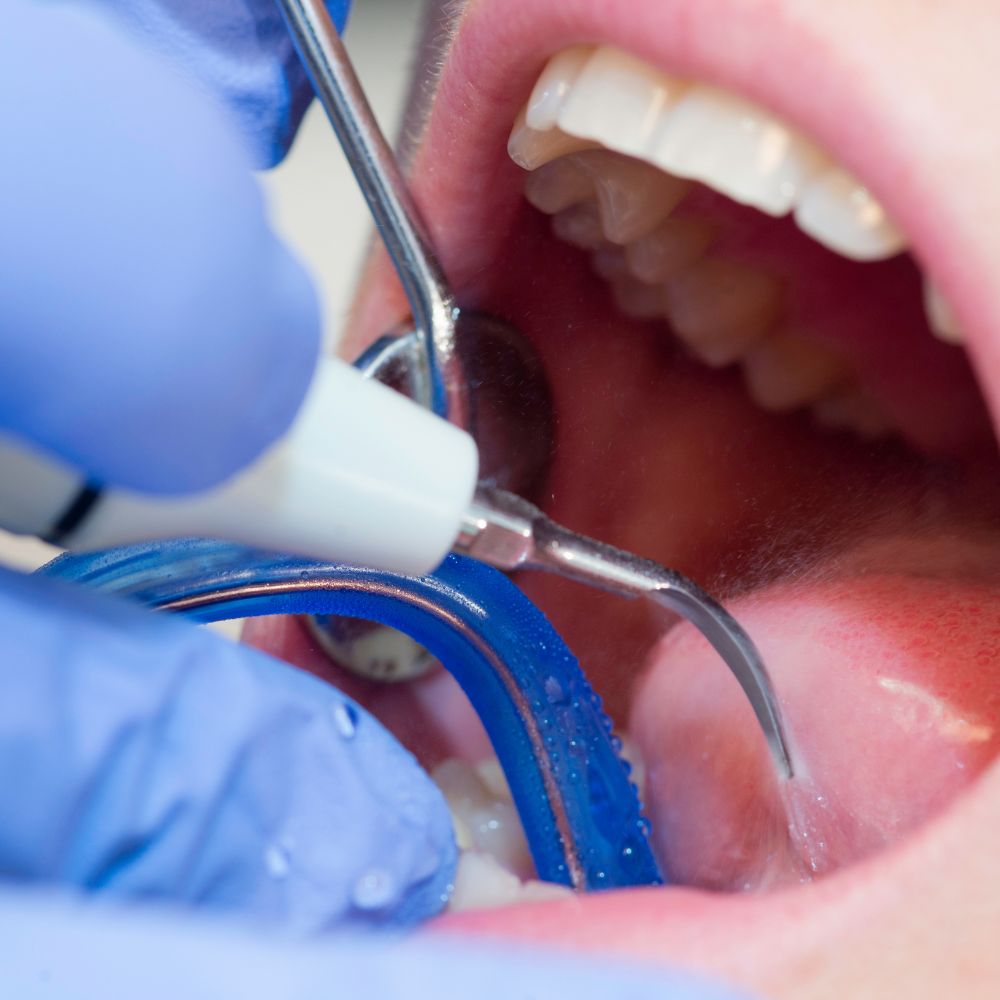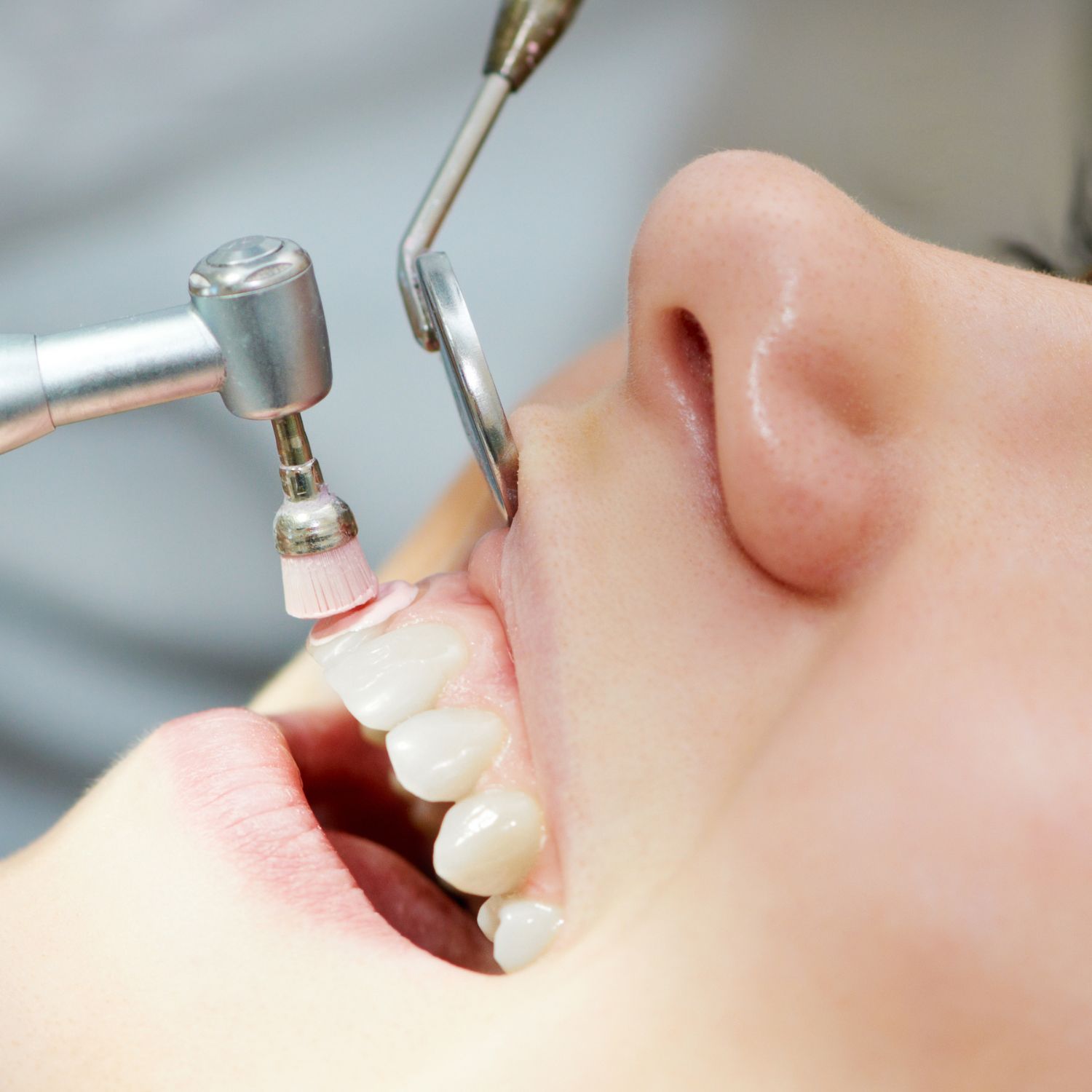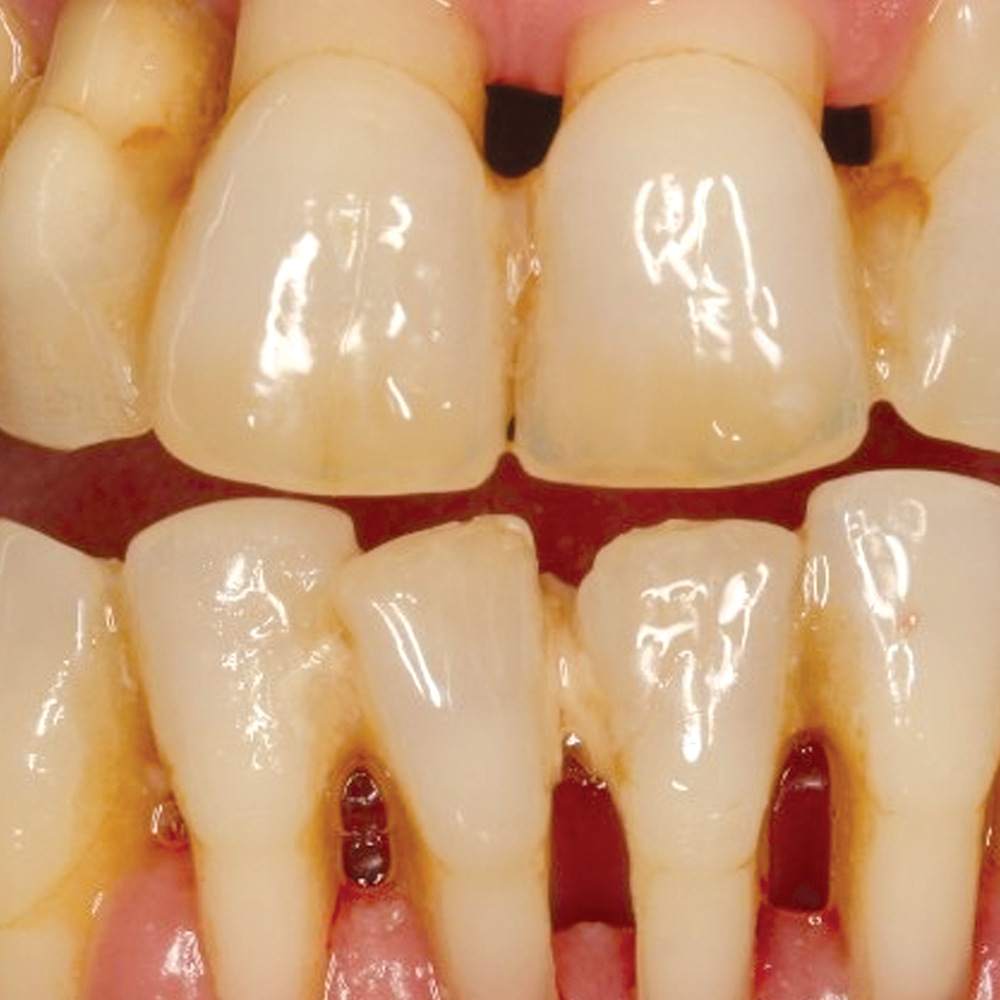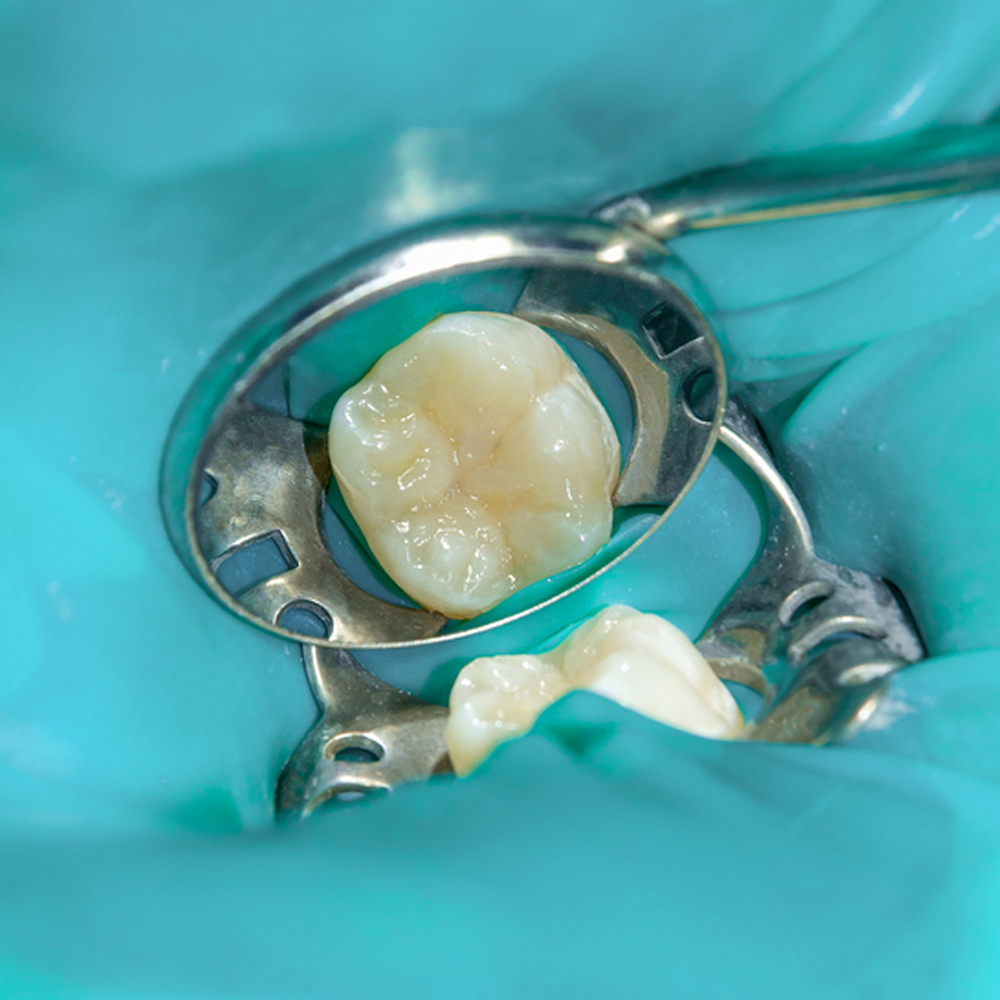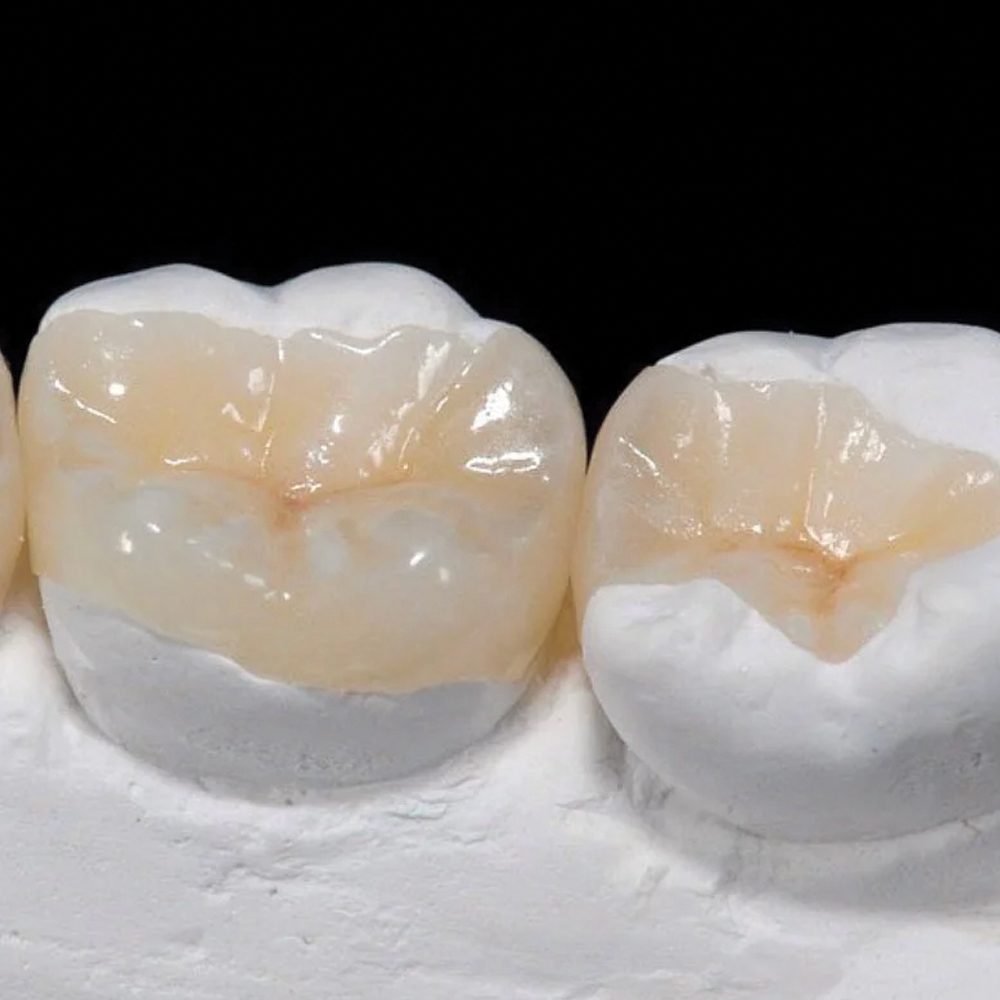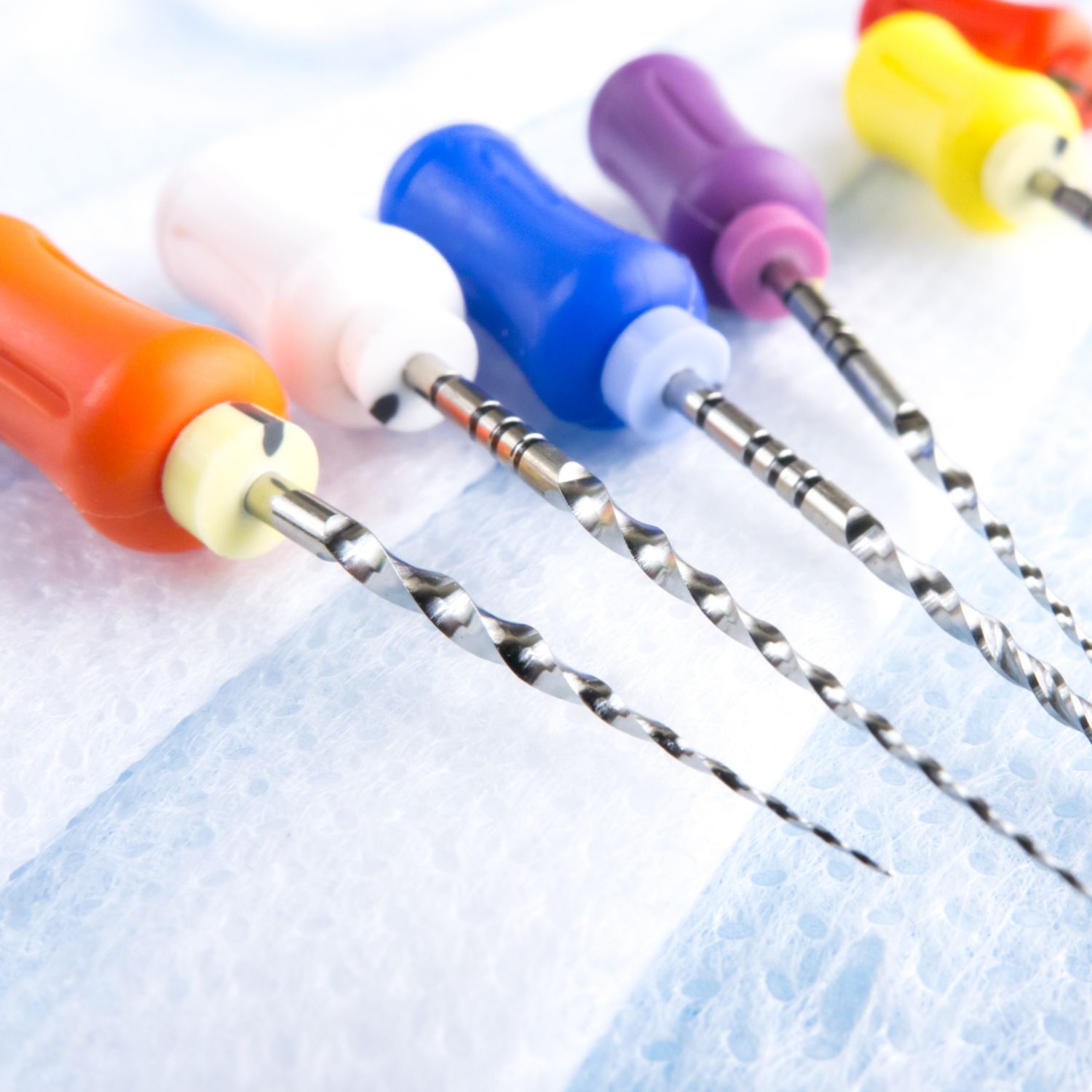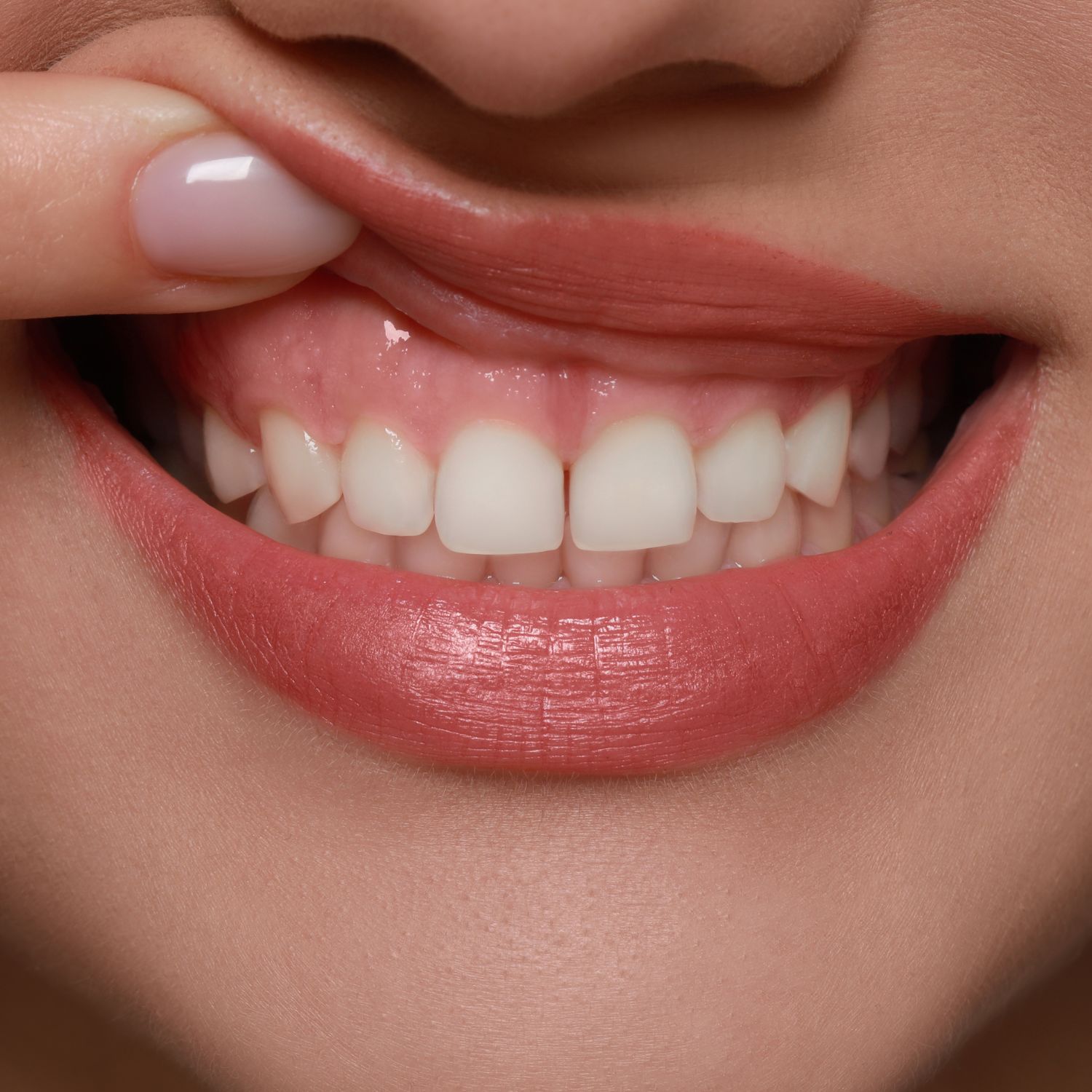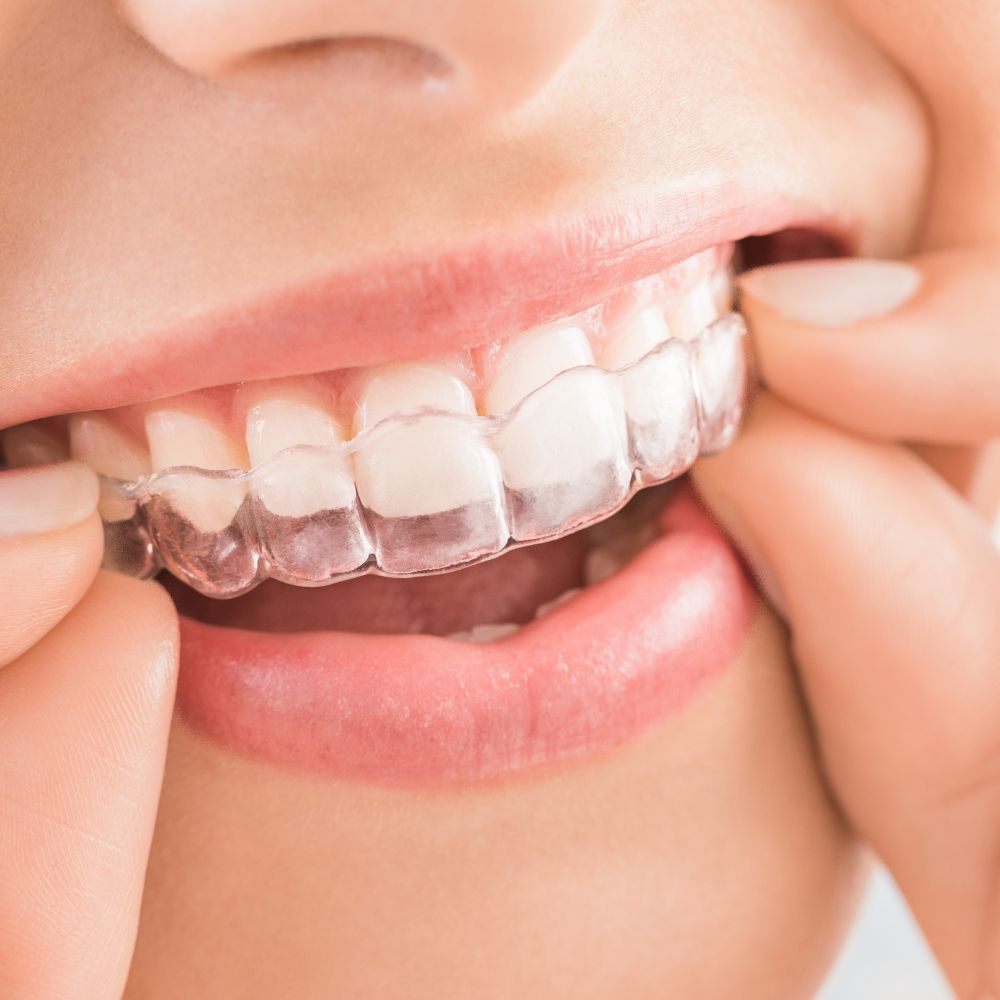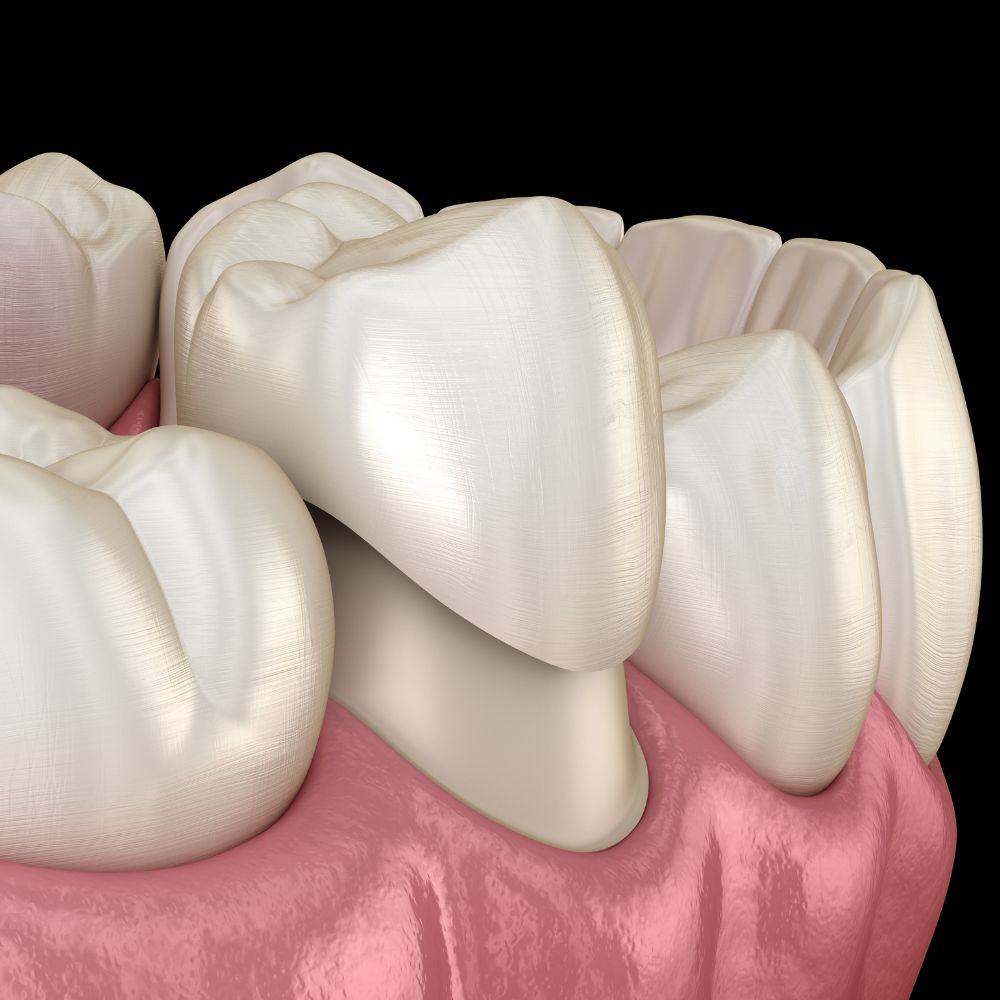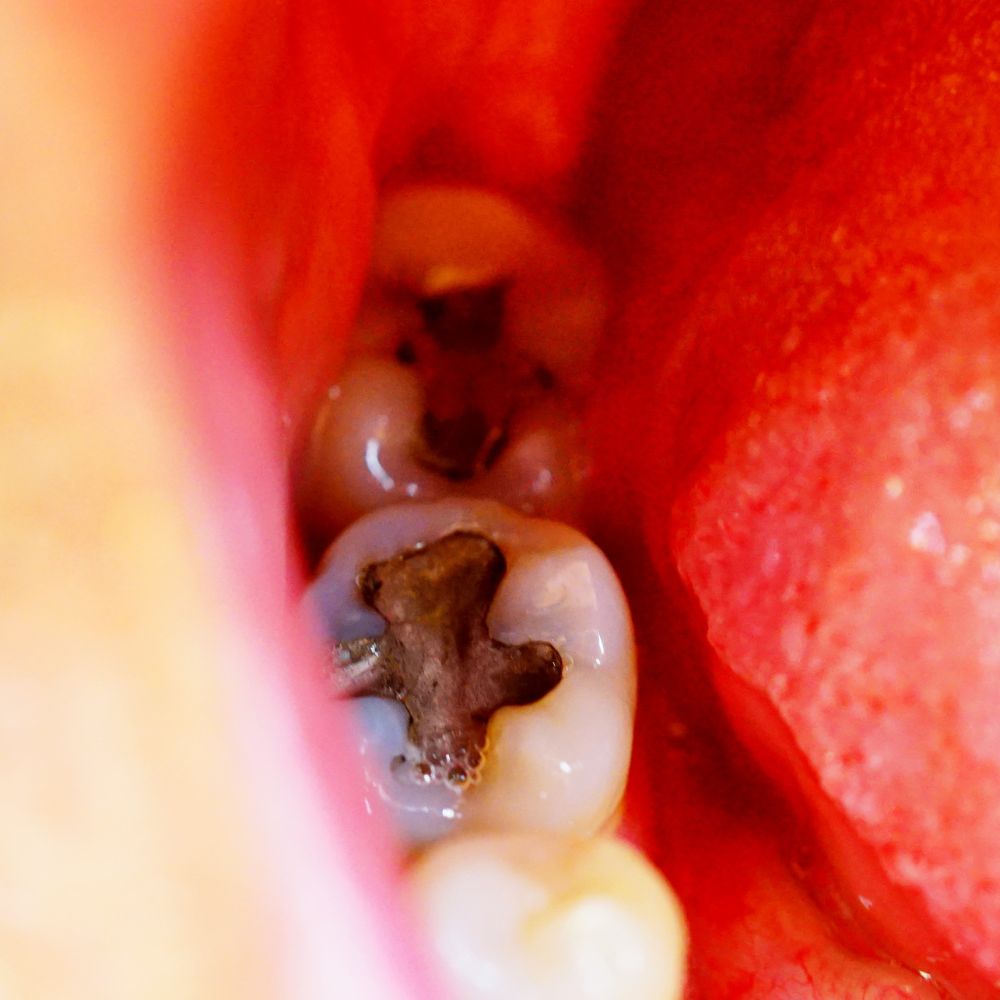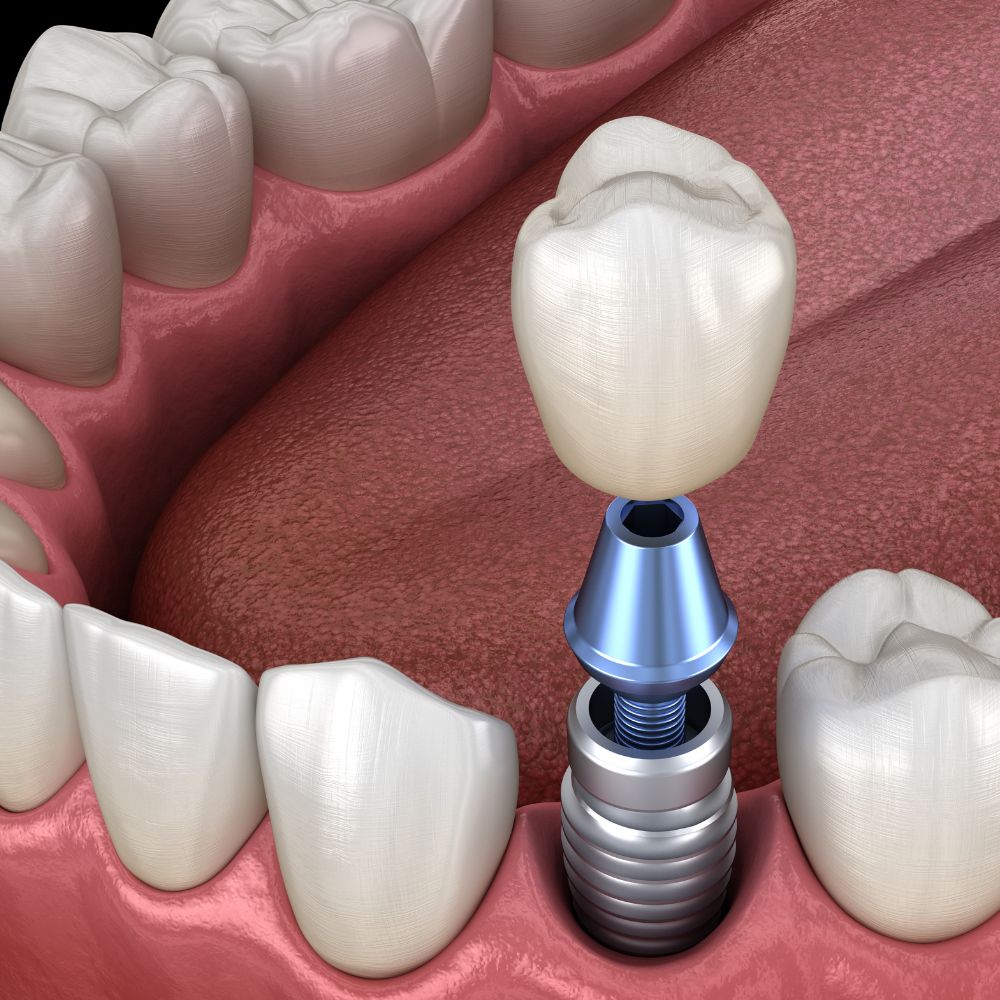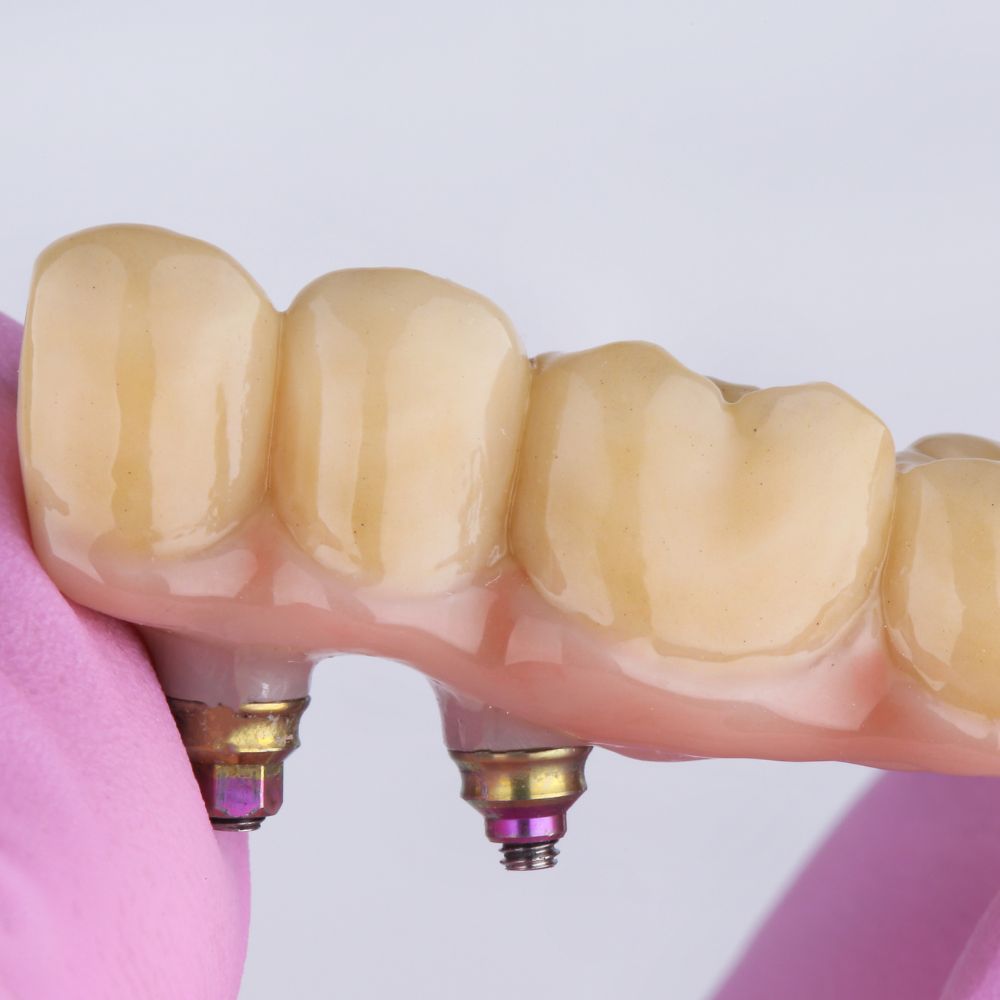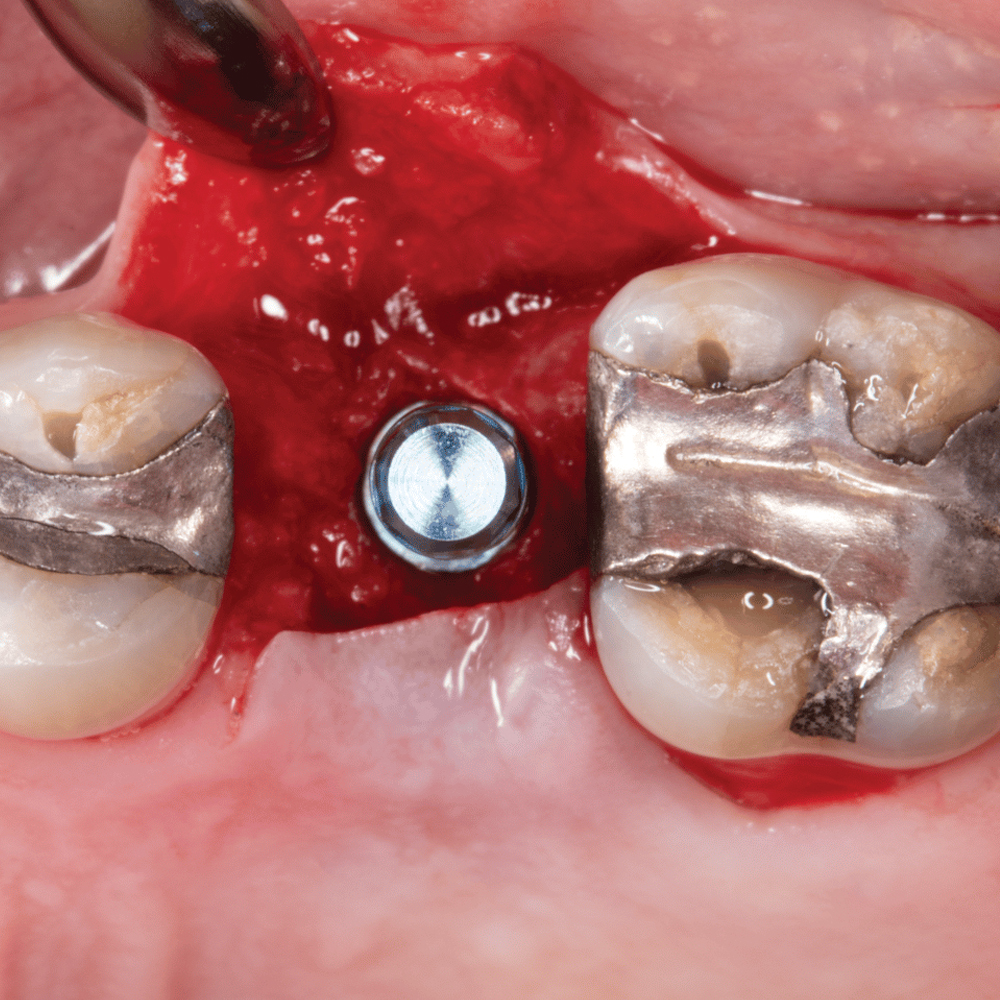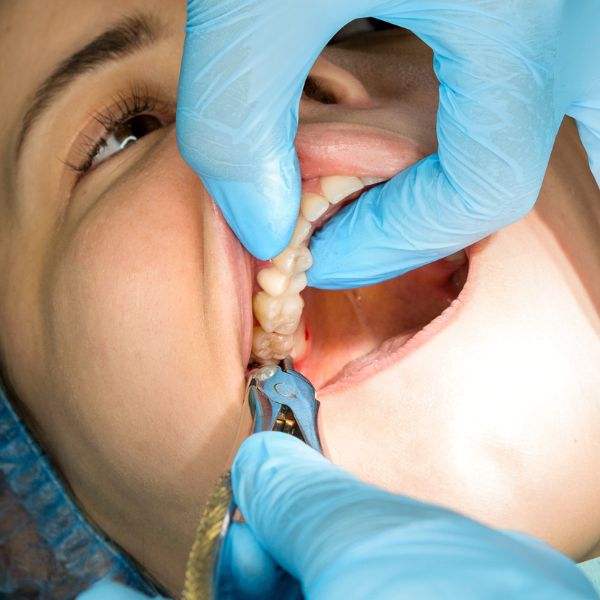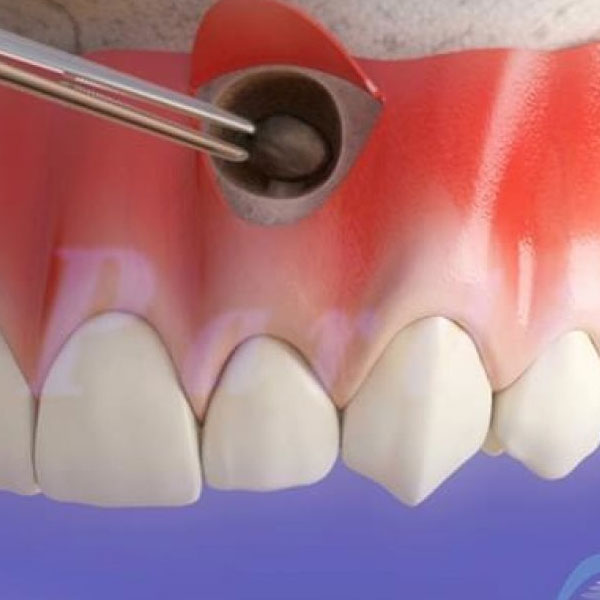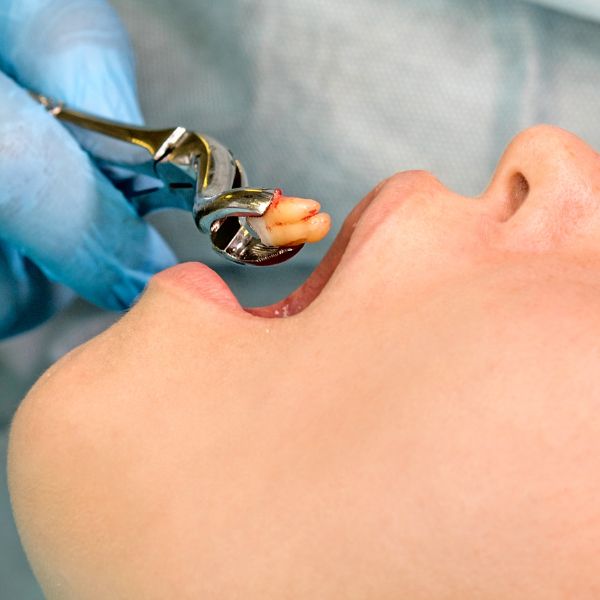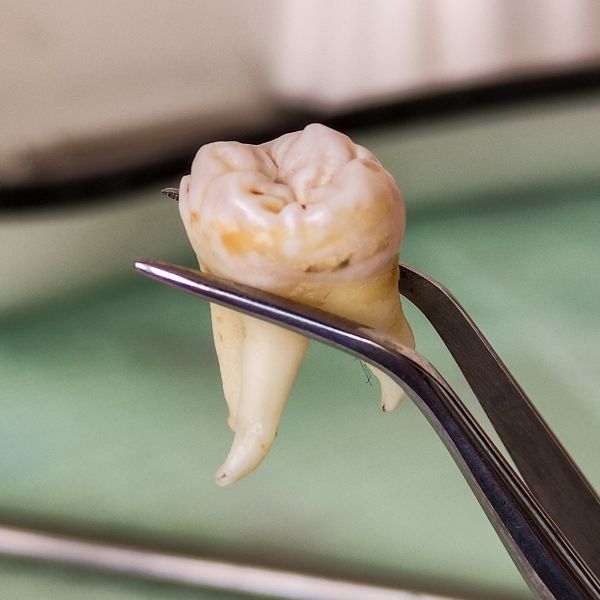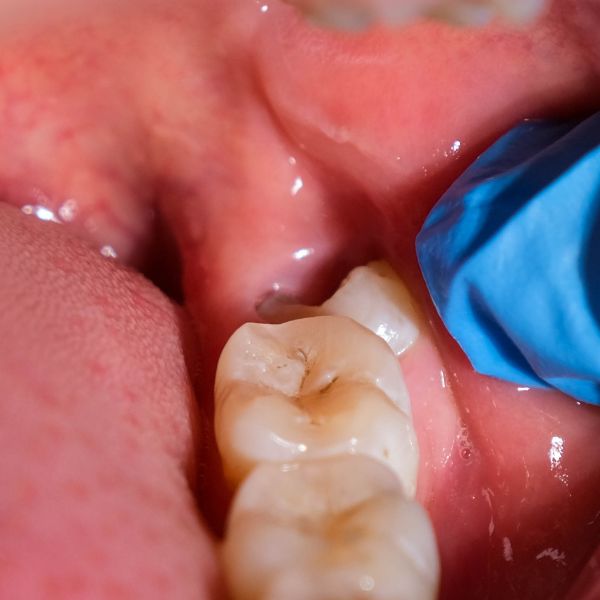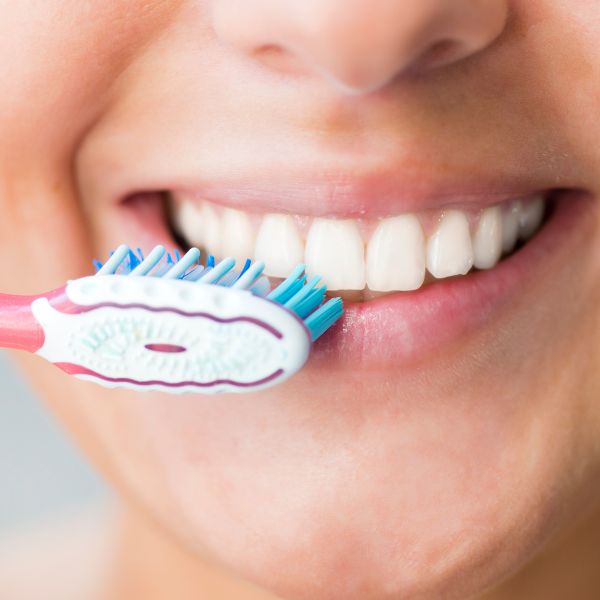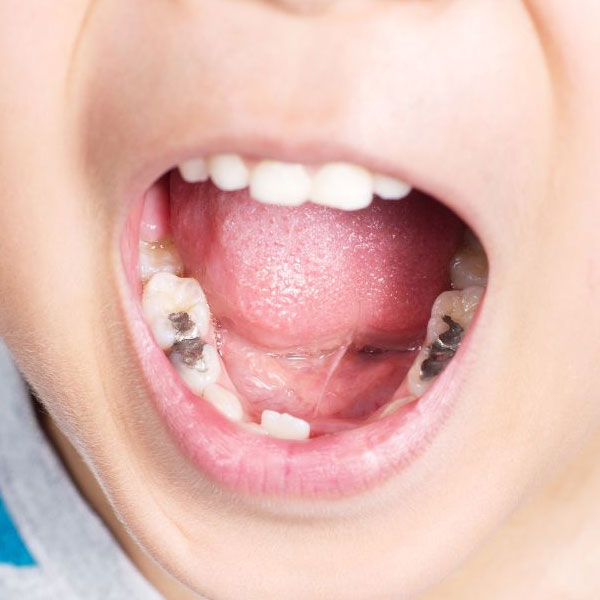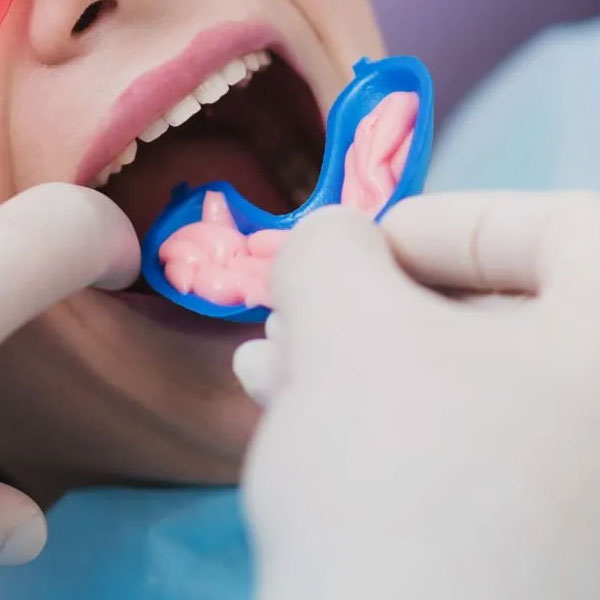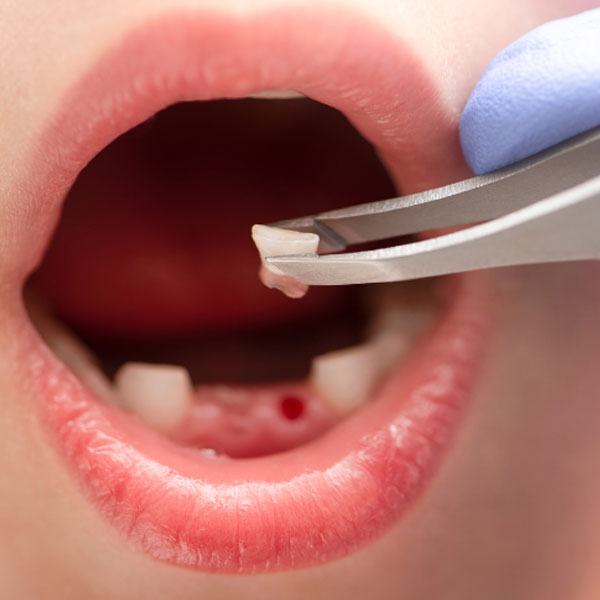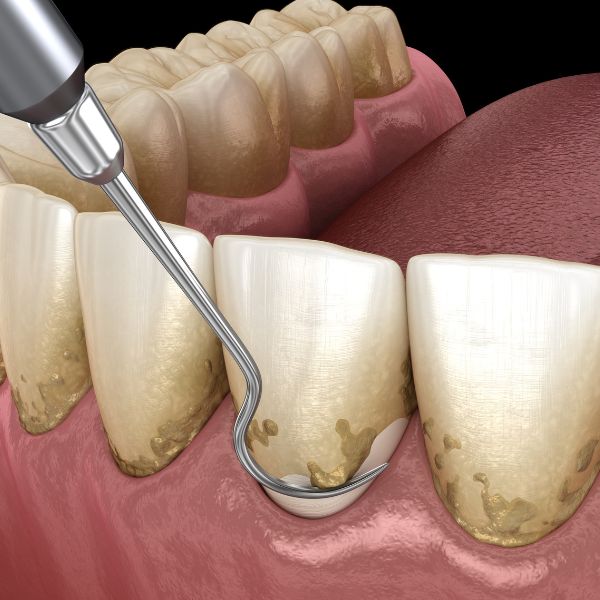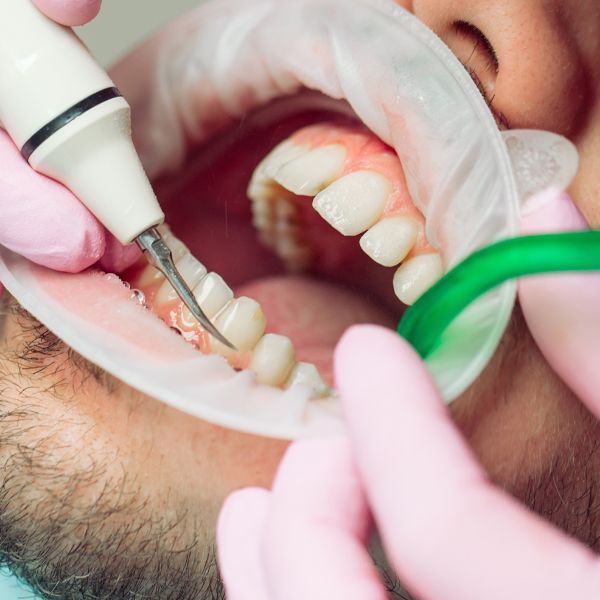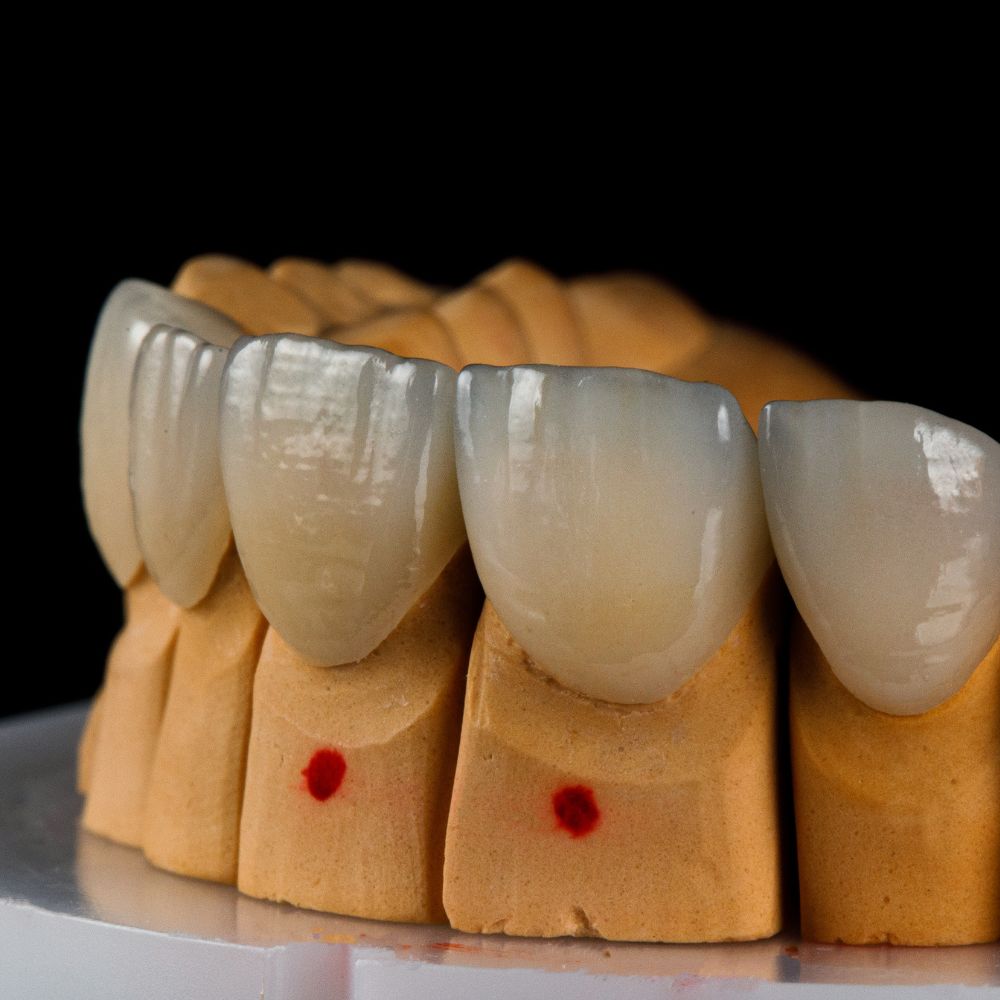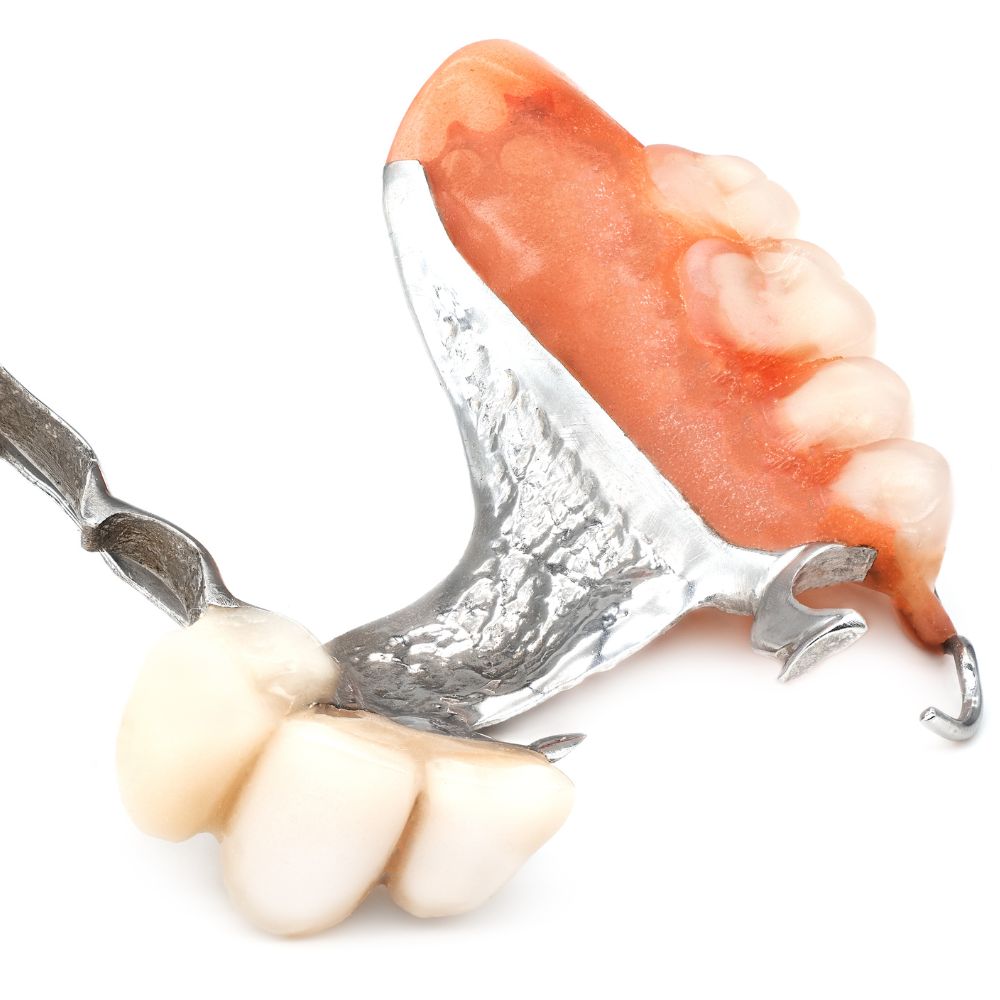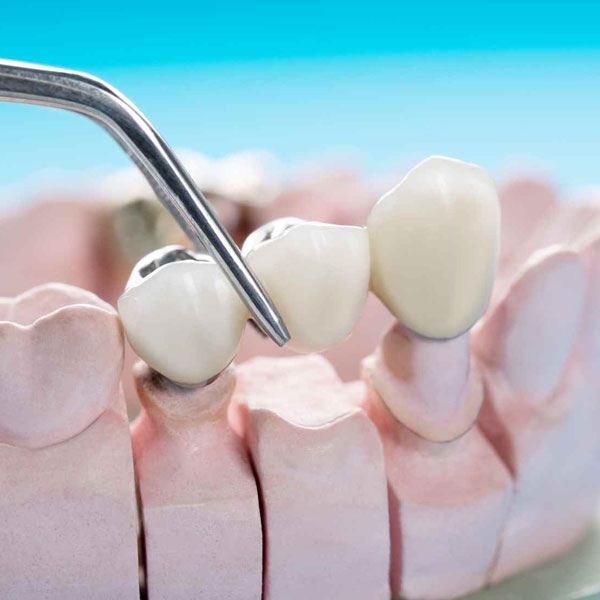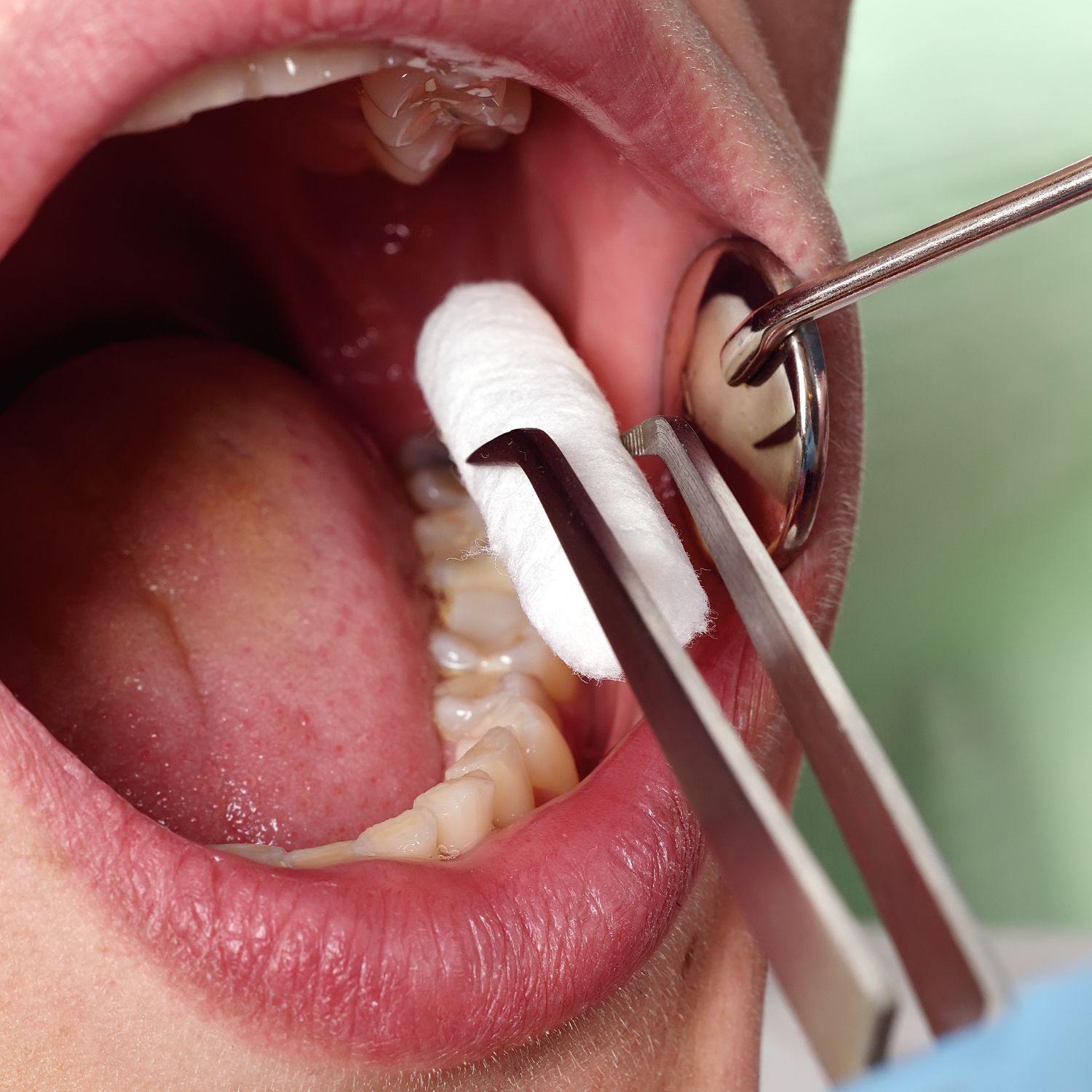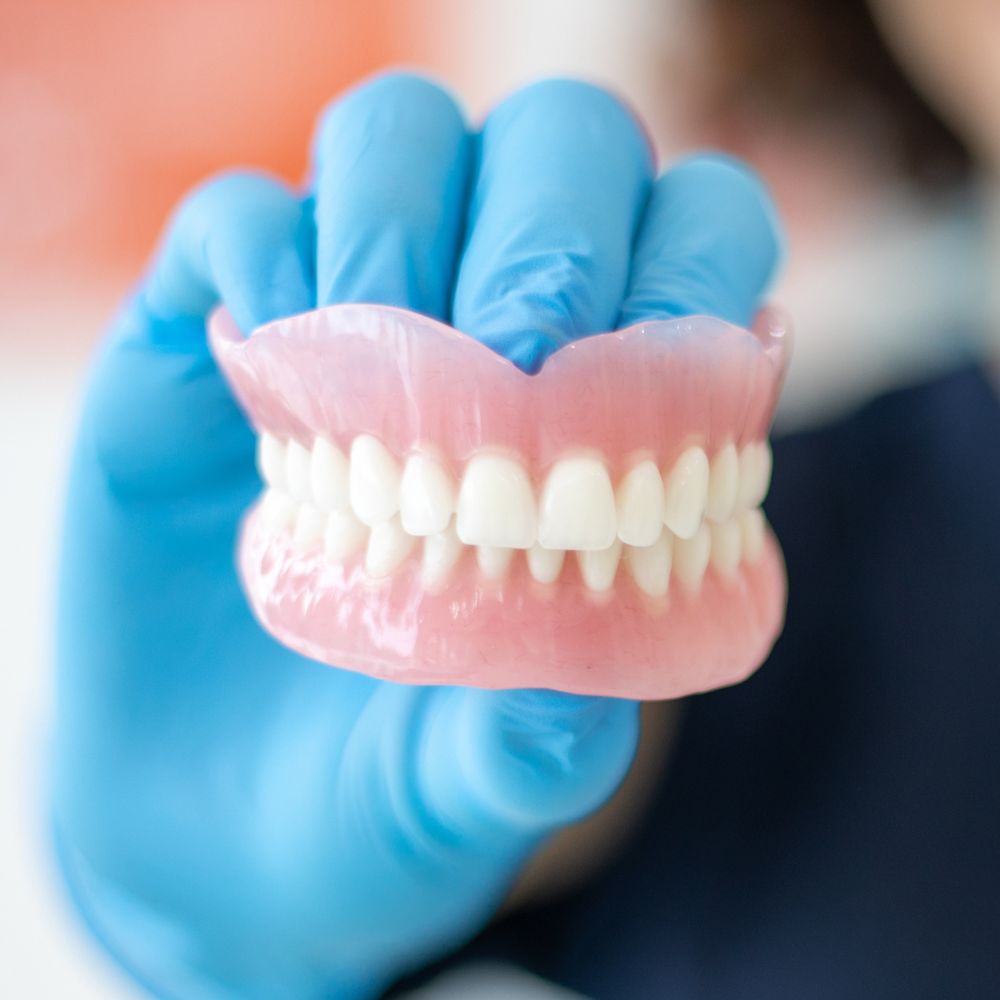Denervation
(Endodontic treatment)
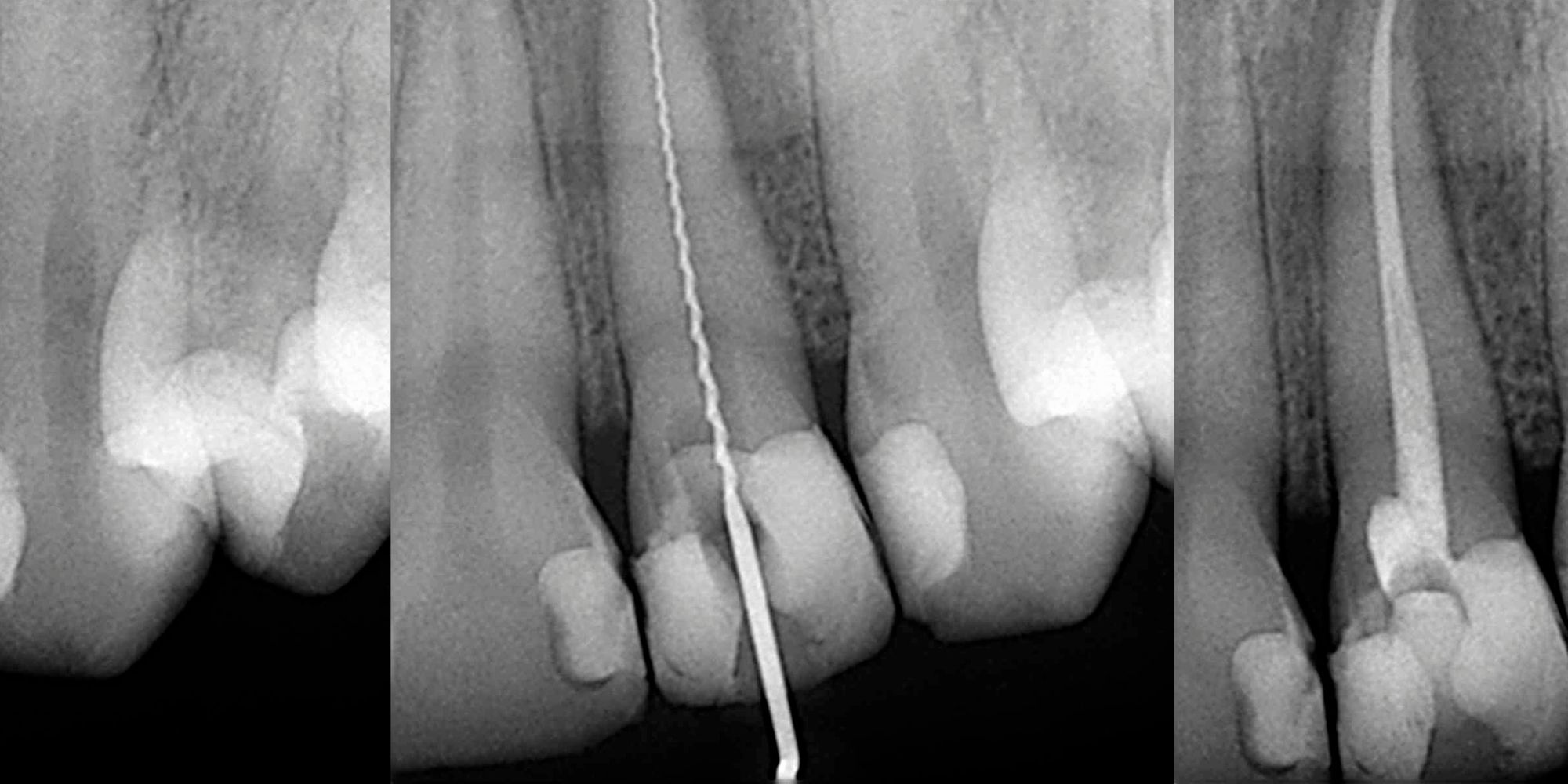
Denervation (Endodontic Treatment)
Tooth denervation is a dental procedure that is often feared and misunderstood by many people. However, it is an extremely effective treatment for saving a severely damaged or infected tooth.
Understanding the anatomy of a tooth
Each tooth has several layers: the outer layer is enamel, followed by dentin and finally the pulp chamber in the center. The pulp chamber contains nerves, blood vessels and connective tissue, which are essential for the growth and health of the tooth.
What causes the need for denervation therapy?
There are several reasons why a tooth may need root canal treatment. The most common cause is deep tooth decay that has reached the pulp chamber, allowing bacteria to infect the nerves and blood vessels. Trauma to the tooth, such as a crack or fracture, can also lead to the need for denervation. In addition, untreated gum disease can progress to the point where it affects the root structure of the tooth, necessitating denervation therapy.
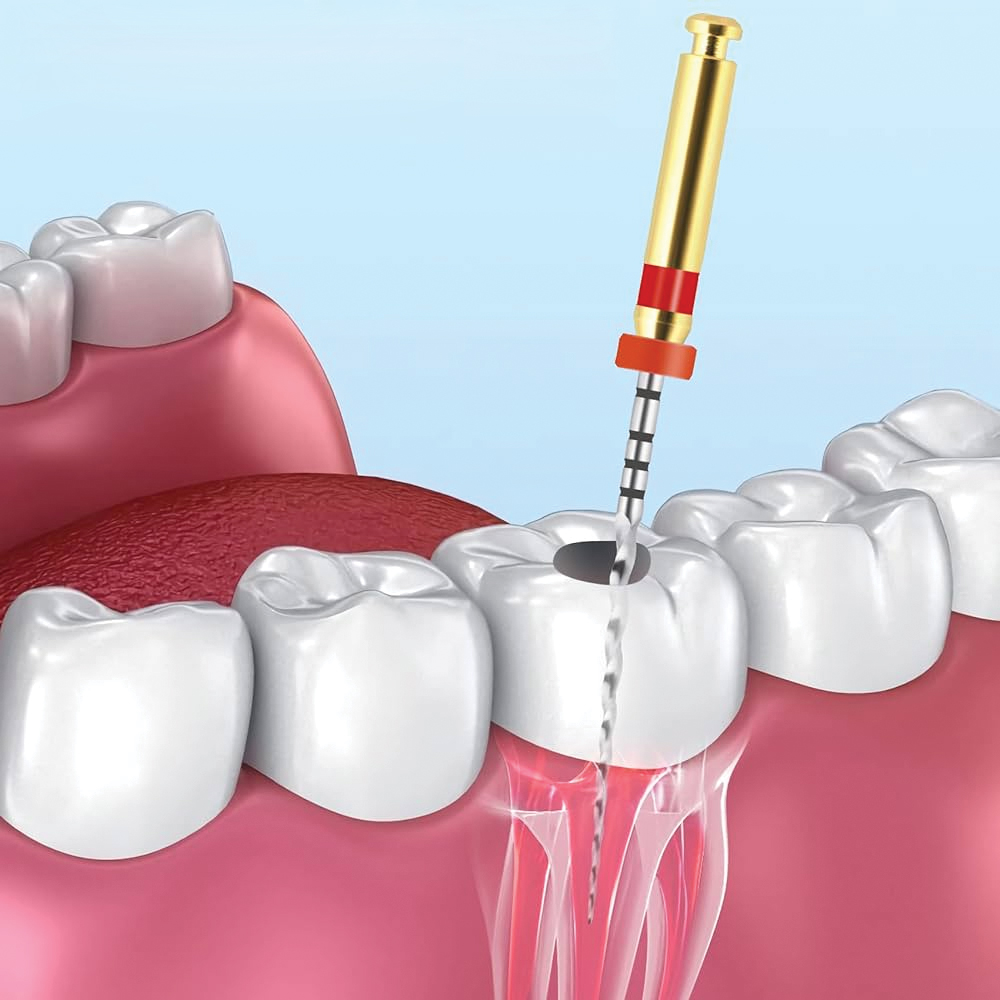

Signs and symptoms of tooth decay problems
It is important to be aware of the signs and symptoms that may indicate the need for denervation treatment. A persistent toothache, especially when biting or chewing, is a common symptom. Sensitivity to hot or cold temperatures that persists even after the stimulus is removed can also be a sign of problems. Swelling or tenderness in the gums near the affected tooth, as well as darkening colour of the tooth, may also indicate the need for treatment.
Benefits of denervation
Despite its reputation, denervation offers many benefits. The main advantage is that it allows you to keep your natural tooth, which is always the best option when possible. By removing the infected or damaged tissue and sealing it, the tooth can be restored to full function and appearance. This eliminates the need for more invasive procedures such as tooth extraction and implants. Endodontic treatment also helps relieve pain and discomfort associated with tooth infections, improving overall oral health and quality of life.
Denervation process
The process usually involves several steps. First, the dentist will administer local anesthesia to ensure your comfort throughout the treatment. A small access hole is then drilled into the tooth to reach the pulp chamber. Using specialized tools, the dentist will carefully remove the infected or damaged tissue and clean it. Once thoroughly cleaned and shaped, it is filled with a biocompatible material called gutta-percha. Finally, a temporary filling is placed to protect the tooth until a permanent restoration, such as a dental crown, is placed.
Request an appointment
Deactivation Faq
How long does the denervation process take?
A denervation usually takes an hour. However, severe cases may require more appointments if the dentist recommends a permanent filling or crown for the tooth.
The time required to perform an extraction is determined by several factors, such as the number of canals that need cleaning and the type of tooth that needs treatment. Some teeth only have one root that needs treatment, but others may have up to three roots that need treatment.
Are aponeurosis necessary?
Unlike other parts of your body, teeth cannot heal themselves when they become infected. If left untreated, the infection and inflammation will spread to other tissues, teeth or even areas of your mouth.
Denervation is necessary to be able to preserve a natural tooth, as neither cleaning nor fillings adequately remove all the damaged pulp.
Is denervation painful?
As long as local anesthesia is done, denervation is not so painful. However, some numbness or discomfort will definitely occur.
Why do aponeurosis sometimes need more visits?
The number of visits required for a denervation procedure can vary depending on several factors. Here are some key factors that determine the number of visits required:
Severity of infection: If the infection is severe and extensive, additional visits may be required to ensure complete removal of the infected pulp and thorough decontamination of the system.
Complexity of the denervation system: The anatomy of our teeth can vary from person to person. Some teeth have complicated and complex systems, which makes it difficult to complete the procedure in a single visit.
Presence of abscesses or cysts: If there are abscesses or cysts associated with the infected tooth, additional visits may be needed to treat these complications.
Need for crown or restoration: After the denervation procedure, a crown or other restoration is usually placed to protect the tooth. If a custom crown or restoration is required, an additional visit may be required to complete the treatment.
Overall oral health of the patient: In some cases, the patient's overall oral health may affect the number of visits required. If there are other dental issues that need to be addressed before or after the denervation procedure, multiple visits may be needed.
Is denervation appropriate for children?
Although denervation therapy may not be the first choice for treating dental problems in children, there are cases where it can provide significant benefits.
One of the main reasons denervation may be appropriate for children is when they have suffered trauma to their teeth. Accidents, falls, or sports-related injuries can cause damage to a child's teeth, including fractures or infections. In such cases, denervation may be necessary to save the affected tooth and prevent further complications. Additionally, if a child has severe tooth decay that has reached the pulp of the tooth, denervation may be the best option to relieve pain and restore oral health.
It is important to note that the decision to recommend root canal treatment for children is not taken lightly. Dentists carefully evaluate each case, taking into account the child's general health, age and specific dental problem. In some cases, the dentist may choose alternative treatments, such as dental crowns or extractions, depending on the child's individual circumstances. Ultimately, the appropriateness of denervation for children is determined on a case-by-case basis, with the goal of preserving natural tooth structure and promoting long-term oral health.

